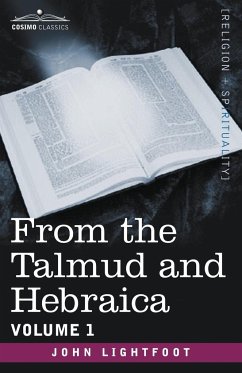Everyone loves a good story, but inside is a great story. It is the story of the Talmud's survival, despite its countless trials and tribulations in every century since the Babylonian exile. For without "hope," an individual or a nation goes into despair and after a short time, depending on one's strength of character, the will to live no longer exists, and death usually comes quickly; whether by suicide, or more slowly by refusing to eat, drink, or take care of oneself. But as long as the Jewish people had the Talmud, at least some would retain hope for better times, during which they could practice their religion in peace. But as those times were all too few and far between, it took great courage and self-sacrifice to keep the Talmud viable for future generations. So before a single section of the Talmud had been written down, its persecutions began, from the Greek Seleucids to the Roman Empire, from the Roman Catholic Church to Islam, from pagans to Jewish heretical sects, from the Russian Czars to Hitler, from individuals to nations, the persecutions of its enemies was never-ending, and we go into enough detail, so the reader, can appreciate the incredible saga of the Talmud's survival. We describe how when the Babylonian Talmud been completed, Justinian, the Roman Emperor (527-565), decreed practically its death--capital punishment to anyone who was immersed in its study. Next, the Karaites, in the 7th century, seriously threatened its existence. Time and time again, they were a stone's throw from making an end of the Talmud, and to its expositors. In the 8th and 9th centuries, Islam turned into the enemy of the Jews, and massacres, blood and fire, burnings, and exile were visited upon the adherents of the Talmud, who were deemed infidels. Assailed by the Roman Catholic church, from the time of Pope Innocent III, the Talmud was burned at the stake in virtually every century from the 12th to the 17th, in Italy, France, Germany, and Spain, to mention a few, while in the 18th century it was assailed by the Frankists, when copies in Poland were dragged through the streets of its cities, tied to horses' tails, and delivered to the executioner to be burned. Yet what has been the result? The Talmud exists to-day, and not one letter in it is missing! No modern persecutions can seriously endanger its existence any longer; the Talmud will survive them and continue as long as the sky spans the earth. In Part I, we briefly review the history of the Jews as reported in the Old Testament, until the first century CE. Part II is devoted to the structure of the Talmud; its major divisions called Orders, and subdivisions, called Tractates, each devoted to a particular area of Jewish law. In Part III, we discuss the sages-most having the title of rabbi-that put the Talmud together, and explained it, so it might be more easily understood by the average Jew. In Part IV, we tell the story of the persecutions of the Talmud and its adherents, including public burnings, confiscations, laws prohibiting Jews from studying, or forcing Jews to dispute its contents before royalty or the Roman Catholic Church-almost always with a former apostate. In the final analysis, the title, "The Indestructible Talmud," could not have been more apropos.








